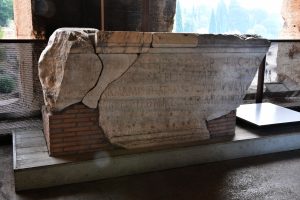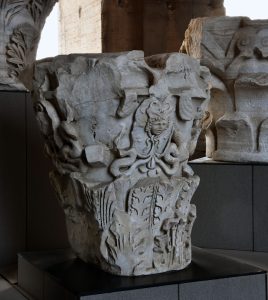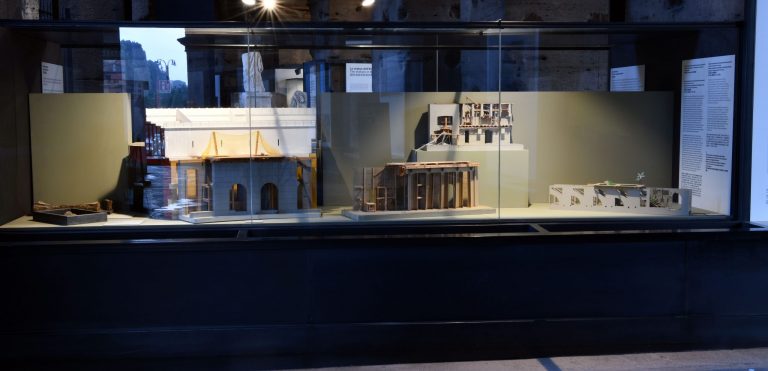Elevators and platforms, or the machinery behind the show
Preparations for the day’s entertainment took place in the Colosseum’s underground levels and all of the necessary technical apparatuses, hidden from public view, were kept beneath the arena floor, filled with trap doors through which people, animals and props could emerge suddenly to surprise spectators.
The Colosseum’s subterranean levels were originally built in wood for the 80 AD inauguration, but the emperor Domitian later upgraded them to sturdy masonry. They stretched underground for roughly half a hectare: a large central corridor was flanked by 14 lateral passages, of which 6 were straight, 2 semi-elliptical and 2 curvilinear.
Throughout the various phases of the Colosseum’s life and certainly up until its last documented event in 523 AD, hoists, platforms and elevators were installed in its underground levels on several occasions. Through a system of trap doors and moveable platforms, this machinery was able to access the arena floor, which stood circa 6 meters above the subterranean corridors.
In the Flavian period, 28 windlasses to lift the same number of freight elevators are documented, all positioned along the curved corridor B and used to hoist caged animals to the surface. In order to activate all 28 elevators simultaneously, a team of 224 people was necessary. Meanwhile, 20 mobile platforms were located in the central corridor, necessary to lift up the props used for wild animal hunts and executions.
Later on, in the Severan period, the existing system in corridor B was replaced with a new system in the straight corridors, made up of 60 “small lifts” used to hoist up both people and animals.






